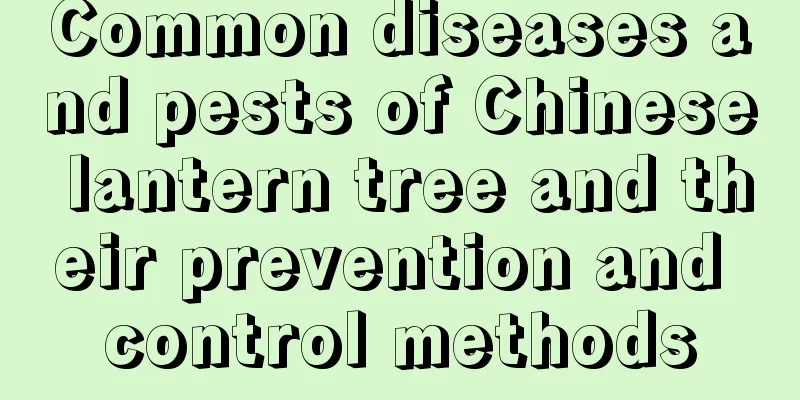Common diseases and pests of Chinese lantern tree and their prevention and control methods

GummosisSymptoms of gum diseaseGummosis mainly attacks the trunk and main branches of the plant. In the early stage of the disease, the infected area will become swollen, dark brown in color, and the surface will be relatively moist. Later, the infected area will become concave and cracked, secreting a yellowish, translucent soft gel, which will eventually turn into an amber-like hard gel with a very smooth surface. Infected plants will grow slowly, and in severe cases the branches will dry up. Causes of gum diseaseGummosis can be caused by many reasons. When plants are damaged by frost, sunburn, mechanical damage, or insect pests, the wounds will produce physiological gummosis. Fungi and bacteria can also produce infectious gummosis. Gummosis prevention and controlYou can scrape the scars of the plants and apply medicine. Use a blade to scrape off the gelatinous substance on the branches and trunks, and apply combing agent and medicine on the wounds. In winter, protect the plants from cold and frost. In hot summer, prevent sunburn and try to avoid mechanical damage. Lantern tree aphidSymptoms of lantern tree aphidsLantern tree aphids can harm the tender leaves, buds, and shoots of the plant. When the disease is severe, it can cause the plant to weaken and even lead to the death of the plant. Lantern tree aphid controlCut off the infested branches and kill any aphids that have not yet spread. Aphids can be eliminated by using natural enemies such as ladybugs and lacewings, or they can be controlled by spraying aldicarb granules, malathion emulsifiable concentrate, and aphid pine emulsifiable concentrate. |
<<: Disease control methods of Huanghuai Cassia
>>: Common diseases of Ximossima and their prevention and treatment methods
Recommend
With three simple steps, you can easily distinguish between Forsythia and Jasmine. Don’t make a fool of yourself!
1. Leaves The leaves of Jasmine are green and nev...
30 Shade Tolerant Plants for Indoor Plantings, Shade Tolerant Indoor Plants
1. Dieffenbachia Dieffenbachia is a very shade-to...
The role of magnolia
Mulan's role 1: Family viewing Magnolia trees...
Cultivation methods and precautions of Tillandsia
1. Soil It is recommended to use loose, fertile, ...
The difference between weeping crabapple and cherry blossom
1. Difference of blades The leaves of the weeping...
How to propagate Camellia sasanqua by cuttings
How to propagate Camellia sasanqua by cuttings Cu...
How to grow red maple potted plants
Red maple potted plant maintenance Red maple pott...
Cyclamen planting environment
1. Summer maintenance The suitable growth tempera...
Why the cabbage I grow doesn’t curl (what should I do if the cabbage I grow at home is difficult to curl)
If the reason that the cabbage leaves do not curl...
Is Epiphyllum a shade-loving or sun-loving plant?
Does Epiphyllum prefer shade or sun? Epiphyllum i...
Can the crabapple be sprayed with water every day? What are the precautions for watering?
1. Is it possible to spray water every day? It is...
When is the best time to sow seeds in a tank? Sowing time and method
Cylinder bean planting time Cylinder beans are an...
Does the Chinese Crabapple prefer shade or sun?
Does the Chinese Crabapple prefer shade or sun? T...
Where do radishes grow and where are they produced?
Radish growth habits Radish is an annual herb tha...
The flower language and meaning of Vanda orchid
1. Flower Language The flowers it blooms are beau...









